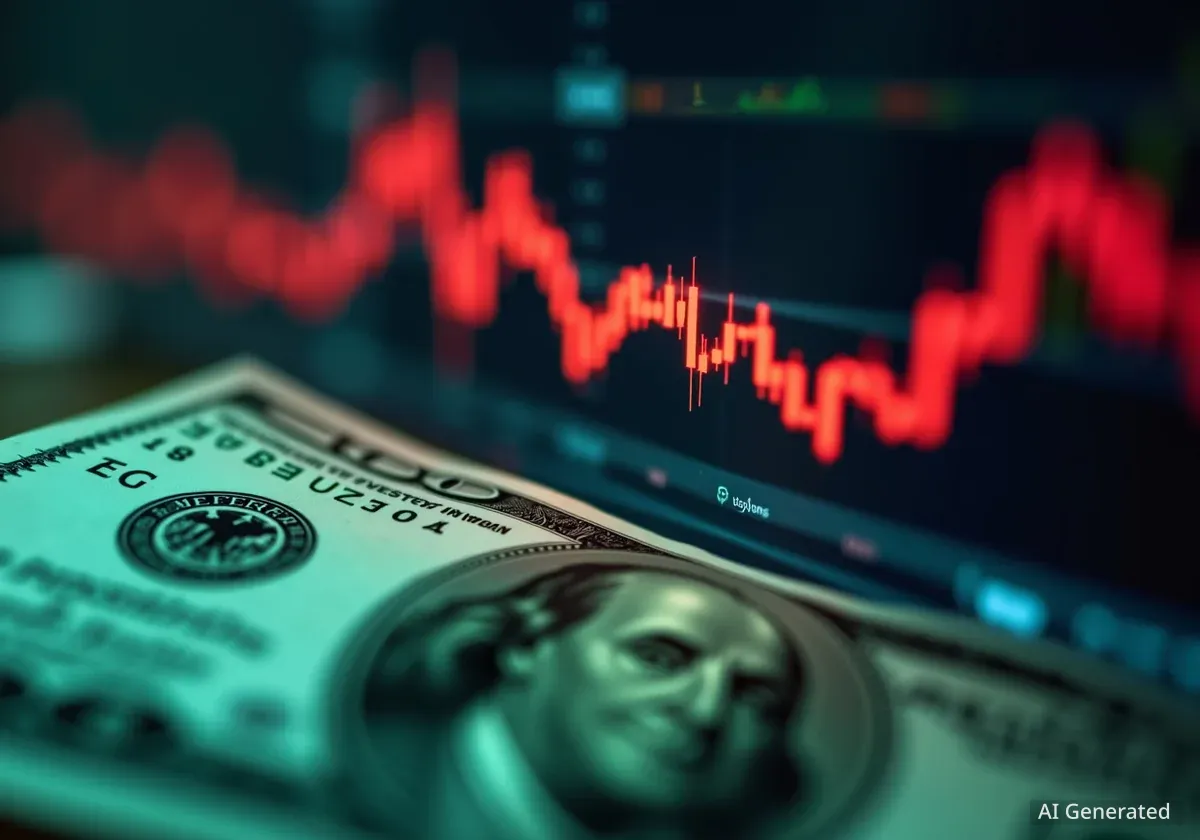The U.S. Federal Reserve initiated its first interest rate cut of 2025 on September 17, reducing its benchmark rate by 25 basis points to a new range of 4.00% to 4.25%. This policy shift, aimed at managing inflation and stimulating a slowing job market, could have significant implications for investment platforms like Robinhood Markets.
As borrowing costs decrease, investors often re-evaluate their strategies, potentially moving away from safer, lower-yield assets. This change in market dynamics may directly benefit companies that cater to retail investors, particularly those with exposure to growth stocks and digital assets.
Key Takeaways
- The Federal Reserve cut its benchmark interest rate by 0.25% on September 17, 2025, with plans for two additional cuts within the year.
- Lower interest rates typically reduce the appeal of safe-haven assets like CDs and Treasury bills, encouraging investment in stocks and cryptocurrencies.
- Robinhood may see increased trading volumes, greater use of margin accounts, and a rise in its Gold subscription service as a result of the policy shift.
- While lower rates reduce Robinhood's interest income from loans, this could be offset by higher transaction-based revenue.
- The new economic environment could make Robinhood's stock more attractive to growth-focused investors, potentially supporting its valuation.
Federal Reserve Adjusts Monetary Policy
On September 17, the Federal Reserve's Open Market Committee announced a reduction in the federal funds rate. The quarter-point cut brings the target range down from 4.25%-4.50% to 4.00%-4.25%.
This decision marks the first rate reduction of 2025. Central bank projections indicate that two more cuts are anticipated before the end of the year. This would mirror the three rate reductions implemented in 2024. Looking further ahead, officials have penciled in a single additional rate cut for 2026.
The primary goals of this monetary easing are to curb persistent inflation while also providing a boost to a labor market that has shown signs of deceleration. Historically, changes in the federal funds rate have a ripple effect across the economy, influencing everything from mortgage rates to the yields on savings accounts.
Understanding Interest Rate Cuts
When the Federal Reserve cuts interest rates, it becomes cheaper for banks to borrow money from each other. This cost saving is often passed on to consumers and businesses in the form of lower loan rates. The intended effect is to encourage spending and investment, thereby stimulating economic activity.
Shifting Investor Behavior in a Lower Rate Environment
During periods of higher interest rates, such as in 2022 and 2023, many investors preferred the safety and predictable returns of fixed-income products. Certificates of deposit (CDs) and Treasury bills offered attractive yields of 4% to 5% with minimal risk.
However, as the Fed lowers its benchmark rate, the yields on these safe assets decline. Consequently, they become less appealing for investors seeking to grow their capital. This often triggers a market rotation, where money flows out of cash-equivalent assets and into investments with higher potential returns, such as stocks and digital currencies.
Online brokerages like Robinhood are positioned to capture this shift. An increase in investor appetite for risk typically translates into higher trading activity, which is a core component of Robinhood's revenue model.
Potential Benefits for Robinhood's Business Model
The changing economic landscape presents several specific opportunities for Robinhood. The company's diverse revenue streams, from trading commissions to subscription services, could all be affected by the Fed's recent policy decision.
Increased Cryptocurrency and Stock Trading
As the returns on savings accounts and CDs diminish, investors are likely to seek alternatives. This could drive significant capital into both the stock market and the cryptocurrency market, leading to a surge in trading volumes on platforms like Robinhood.
In the first half of 2025, cryptocurrency trades accounted for 37% of Robinhood's transaction revenue and 22% of its total revenue, highlighting the importance of this asset class to its business.
Furthermore, a lower interest rate environment can weaken the U.S. dollar. Some investors view digital assets like Bitcoin and Ethereum as a hedge against currency devaluation, which could further fuel demand. The platform's revenue from cryptocurrency trading has already shown substantial growth, and this trend may accelerate.
The Dynamics of Margin Lending
Robinhood generates income from interest on margin loans, which allow customers to borrow money to purchase securities. In the first half of 2025, margin interest represented 12% of the company's total revenue. The company also earns interest by "sweeping" excess customer cash into partner banks, which accounted for another 6% of revenue.
While a rate cut will directly reduce the interest Robinhood earns from these activities, it also lowers the cost for customers to borrow. Cheaper margin loans could encourage more investors to use leverage, especially in a market where they are chasing higher returns.
This increase in margin trading activity would boost transaction revenues, which made up 58% of the company's top line in the first half of the year. The potential rise in trading volume could more than compensate for the lower interest income per loan.
Growing Appeal of the Gold Subscription
Robinhood offers a premium subscription service called Gold for $5 per month. This tier provides several benefits, including higher interest rates on uninvested cash, reduced margin rates, and access to advanced market data.
In an environment of declining interest rates, the enhanced yield offered on cash balances through a Gold subscription becomes a more compelling feature. This could drive subscriber growth, providing Robinhood with a more stable and predictable source of revenue.
"As market-wide yields fall, premium services that offer even a slight edge on cash returns or borrowing costs become significantly more attractive to active retail investors," noted a market analyst. "This can turn a nice-to-have feature into a must-have tool for many users."
The strategy appears to be working. In the second quarter of 2025, Robinhood's Gold subscribers grew 76% year-over-year to 3.5 million. Subscription revenue now accounts for 4% of the company's total revenue and is growing rapidly.
Company Growth and Market Outlook
Robinhood has demonstrated impressive growth over the past several years. From 2020 to 2024, the platform more than doubled its number of funded customers, growing from 12.5 million to 25.2 million. Over the same period, its assets under custody more than tripled, rising from $63 billion to $193 billion.
This expansion occurred even during periods of high interest rates that generally dampened retail trading activity. Analysts project continued strong performance, with revenue expected to grow at a compound annual growth rate (CAGR) of 22% between 2024 and 2027.
Robinhood's Growth Metrics (2020-2024)
- Funded Customers: 12.5 million to 25.2 million
- Assets Under Custody: $63 billion to $193 billion
- Revenue CAGR: 32.5%
For investors, lower interest rates often justify paying higher premiums for growth stocks. Companies with strong projected earnings growth, like Robinhood, become more attractive. Although Robinhood's stock has already experienced a significant rally of over 440% in the past year, the Federal Reserve's new policy direction could provide further momentum as investors seek out high-growth opportunities in a low-yield world.





